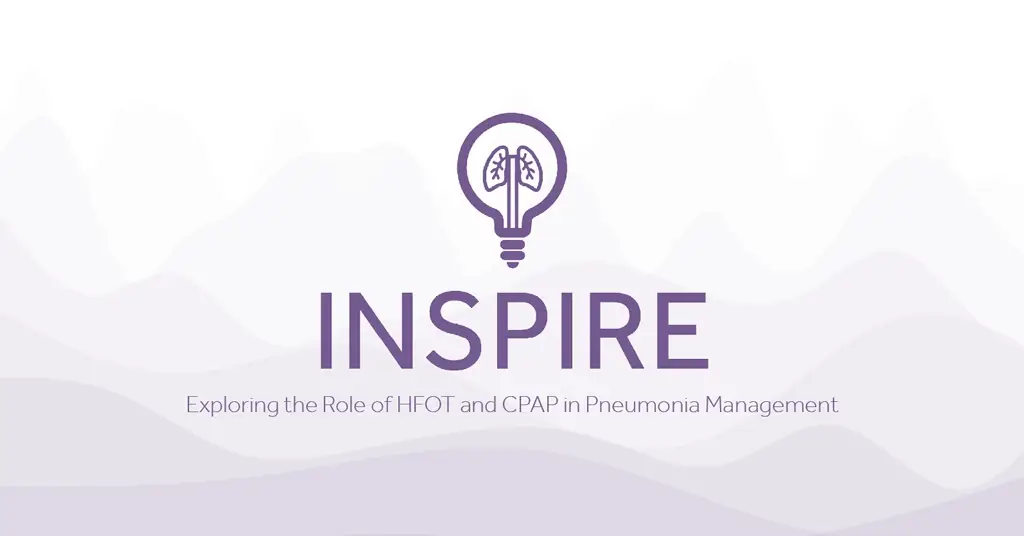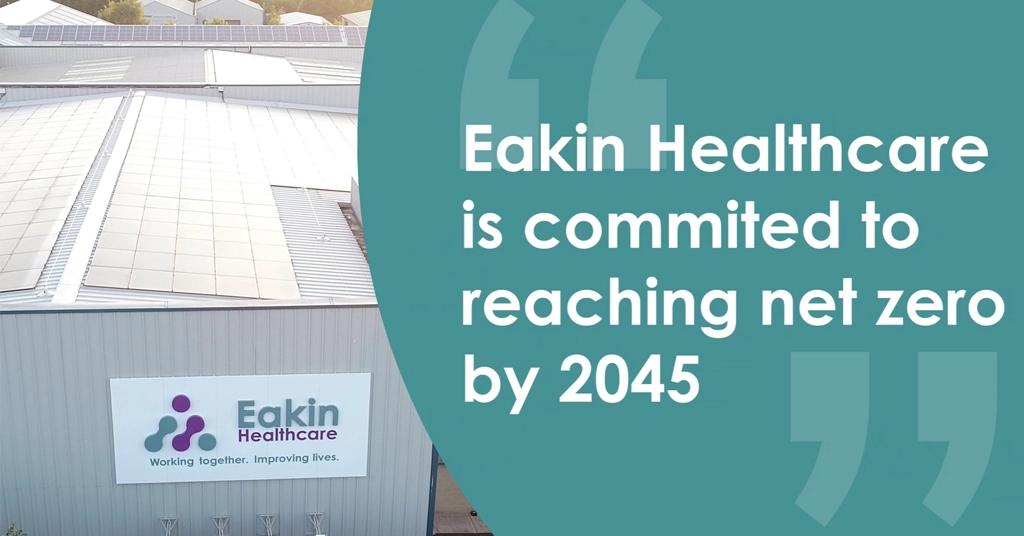Exploring the Role of HFOT and CPAP in Pneumonia Management

Introduction
Pneumonia is defined by the National Institute for Health Care Excellence (NICE) as an infection of the lung tissue whereby the air sacs in the lungs become filled with microorganisms, fluid, and inflammatory cells impairing lung function. It can be caused by a bacterial or viral infection, or it can be caught from someone who has it or if another infection is present such as flu or coronavirus. It may be caused by something getting into your lungs, such as water or food known as aspiration pneumonia.
Diagnosis
Diagnosing pneumonia is based on identifying signs and symptoms of an acute lower respiratory tract infection and can be confirmed by an x-ray. Pneumonia is categorised as either Community Acquired Pneumonia (CAP) which is when the infection is acquired out of the hospital or Hospital Acquired Pneumonia (HAP), which develops 48 hours or more after hospital admission. There are distinct microbial causes and patient factors requiring different management approaches.
In the UK, pneumonia affects around 8 in 1,000 adults each year. It is more widespread in autumn and winter. Pneumonia can affect people of any age, but it is more common – and can be more serious – in certain groups of people, such as the very young or the elderly. People in these groups are more likely to need hospital treatment if they develop pneumonia. Hospital-acquired respiratory infections, including hospital-acquired pneumonia unrelated to intubation, afflict 1.5% of inpatients in England at any given time, prolonging hospital stays by approximately 8 days and bearing a reported mortality rate ranging from 30% to 70%. Disparities in clinical management and outcomes exist nationwide.
Respiratory support modalities such as High Flow Oxygen Therapy (HFOT) and Continuous Positive Airway Pressure (CPAP) have demonstrated their importance in improving patient outcomes in pneumonia treatment. Studies have shown that these modalities enhance oxygenation, reduce respiratory distress, and potentially prevent the need for invasive mechanical ventilation, thereby reducing complications and shortening hospital stays (Crimi et al., 2020; Frat et al., 2015). By providing tailored respiratory support, HFOT and CPAP contribute to individualised patient care and improved treatment efficacy, leading to better outcomes in pneumonia management.
Management strategies
The BTS Guideline (Lim et al, 2015) for hospital management of pneumonia primarily addresses CAP, outlining key strategies to optimise patient care. However, these strategies also have implications for the management of HAP, albeit with some differences in approach due to the distinct nature of HAP.
Firstly, all patients with pneumonia, whether community-acquired or hospital-acquired, should receive appropriate oxygen therapy while closely monitoring oxygen saturation and inspired oxygen concentration. The goal remains consistent: to maintain arterial oxygen tension (PaO2) at or above 8 kPa and oxygen saturation (SpO2) between 94% and 98%. This approach ensures adequate oxygenation in both CAP and HAP patients, although HAP may present unique challenges such as increased antibiotic resistance and comorbidities.
Additionally, airway clearance techniques should be considered for all pneumonia patients, particularly those with sputum buildup and difficulty with expectoration, regardless of whether the pneumonia is community-acquired or hospital-acquired. This is especially pertinent in cases of HAP, where patients may have pre-existing lung conditions or compromised immune systems, increasing the risk of respiratory complications.
In more severe cases of pneumonia, non-invasive ventilation and continuous positive airway pressure are generally not recommended as first-line treatments for respiratory failure due to CAP. However, similar considerations may apply to hospital-acquired pneumonia, although the decision to initiate non-invasive support should be made thoughtfully and in consultation with critical care specialists. In both CAP and HAP, if a trial of non-invasive support is deemed necessary, it should only be conducted in a critical care setting with immediate access to expertise for a swift transition to invasive ventilation if needed.
High Flow Oxygen Therapy
There have been numerous studies comparing the effectiveness of conventional oxygen therapy with HFOT, and since the COVID-19 pandemic, we have witnessed a growing global trend towards the increased use of HFOT. In patients with moderate-to-severe acute hypoxemic respiratory failure, HFOT has emerged as a promising method for improving oxygen levels and reducing the need for escalated respiratory support and intubation, when compared to conventional oxygen therapy (COT) (Crimi et al, 20).
Typically, HFOT is used for patients who are spontaneously breathing and require oxygen at higher flow rates. This therapy, delivered through a nasal cannula, delivers warmed and humidified gases at rates of up to 80 litres per minute and oxygen concentrations ranging from 21% to 100%. Notably, studies have shown that HFOT not only enhances comfort levels but also alleviates the severity of and reduces respiratory rate (Frat et al, 2015). Moreover, HFOT aids in mucociliary clearance, reduces respiratory demand, enhances oxygenation, and improves alveolar ventilation by reducing anatomical dead space. By reducing respiratory effort and supporting oxygenation, HFOT can potentially prevent the need for admission to ICU and mechanical ventilation.
One of the significant advantages of HFOT in pneumonia management is its ability to deliver higher FiO2 concentrations effectively, thereby improving oxygenation and alleviating hypoxemia. This is crucial as hypoxemia is a common complication of pneumonia and a leading cause of mortality. HFOT can provide FiO2 levels ranging from 0.21 to 1.0, allowing precise titration to meet individual patient needs without the discomfort associated with traditional masks or invasive procedures.
Escalation to CPAP
There is also the option of escalating treatment to CPAP therapy if the patient’s oxygen saturation does not improve with HFOT. Unlike HFOT, CPAP delivers a fixed level of positive pressure when the patient is breathing in and out. It does not function as a ventilator but helps splint the airways open to support a natural respiratory pattern. It does this by recruiting collapsed alveoli and increasing the surface area for gas exchange which makes breathing easier for the patient and improves oxygenation.
Conclusion
In conclusion, HFOT and CPAP represent valuable adjuncts in the management of pneumonia, offering non-invasive respiratory support with benefits including improved oxygenation, reduced work of breathing, and potential avoidance of invasive mechanical ventilation. However, careful patient selection, monitoring, and titration are essential to optimise outcomes and minimise complications. Future research and clinical trials are needed to further clarify the roles and efficacy of these advanced respiratory support modalities in pneumonia management.
Crimi, C. et al (2022). High-flow nasal oxygen versus conventional oxygen therapy in patients with COVID-19 pneumonia and mild hypoxaemia: a randomised controlled trial. Thorax, 78. https://doi.org/10.1136/thoraxjnl-2022-218806
Frat, J.-P. et al (2015). High-Flow Oxygen through Nasal Cannula in Acute Hypoxemic Respiratory Failure. New England Journal of Medicine, 372(23), 2185–2196. https://doi.org/10.1056/nejmoa1503326
Lim, W. S., Smith, D. L., Wise, M. P., & Welham, S. A. (2015). British Thoracic Society community acquired pneumonia guideline and the NICE pneumonia guideline: how they fit together. Thorax, 70(7), 698–700. https://doi.org/10.1136/thoraxjnl-2015-206881
NHS England. (2022). RightCare Community- acquired Pneumonia Toolkit. https://www.england.nhs.uk/rightcare/wp-content/uploads/sites/40/2022/09/RightCare-Pneumonia-toolkit.pdf
NHS Inform. (2022, December 7). Pneumonia. www.nhsinform.scot. https://www.nhsinform.scot/illnesses-and-conditions/lungs-and-airways/pneumonia/
NICE. (2014, December 3). Introduction | Pneumonia in adults: diagnosis and management | Guidance | NICE. Nice.org.uk; NICE. https://www.nice.org.uk/guidance/CG191/chapter/introduction
NICE guideline. (2023, October 31). Recommendations | Suspected acute respiratory infection in over 16s: assessment at first presentation and initial management | Guidance | NICE. Www.nice.org.uk. https://www.nice.org.uk/guidance/ng237/chapter/Recommendations

Meet The Author - Abby Lennon
Clinical Nurse Adviser, RN
Abby works alongside the Clinical Education Team to provide support and education to healthcare professionals using her knowledge and experience as a registered nurse working in respiratory wards and intensive care units over the last eight years.

Abby Lennon
Clinical Nurse Adviser, RN





